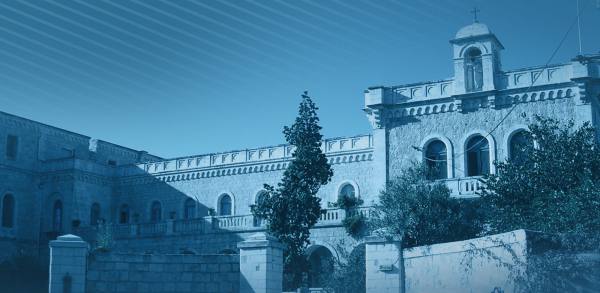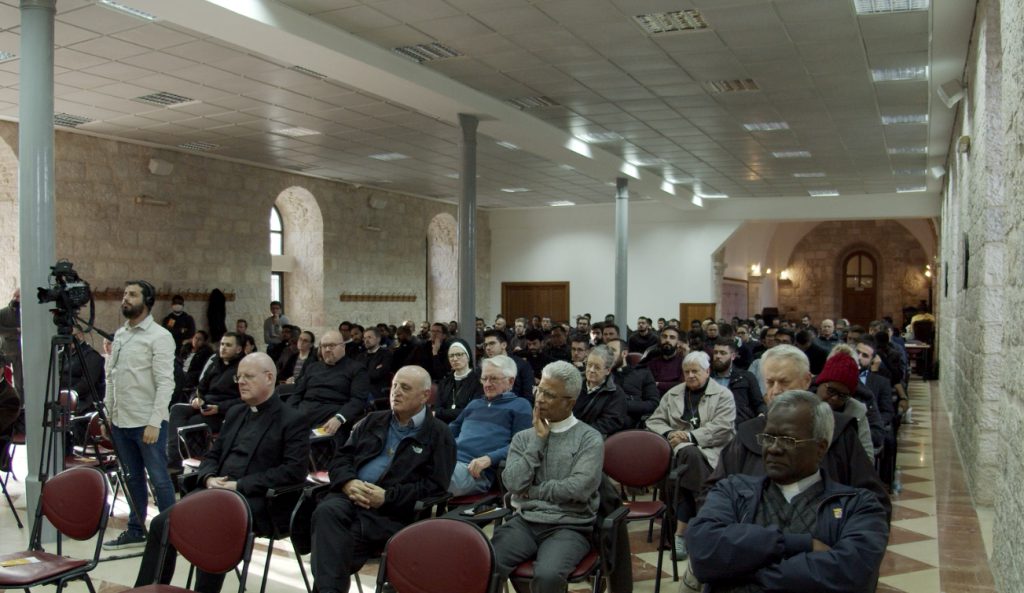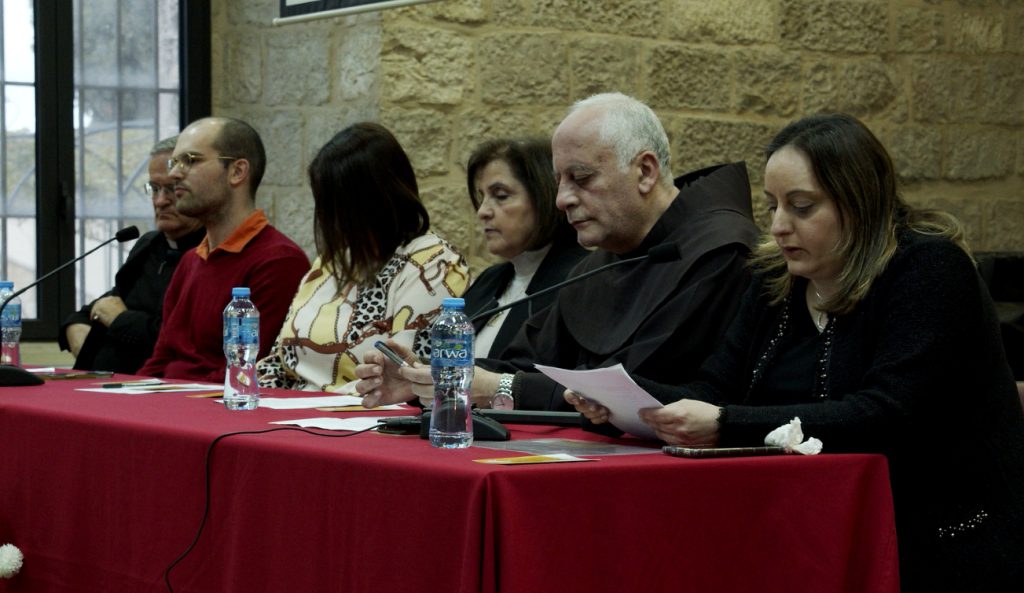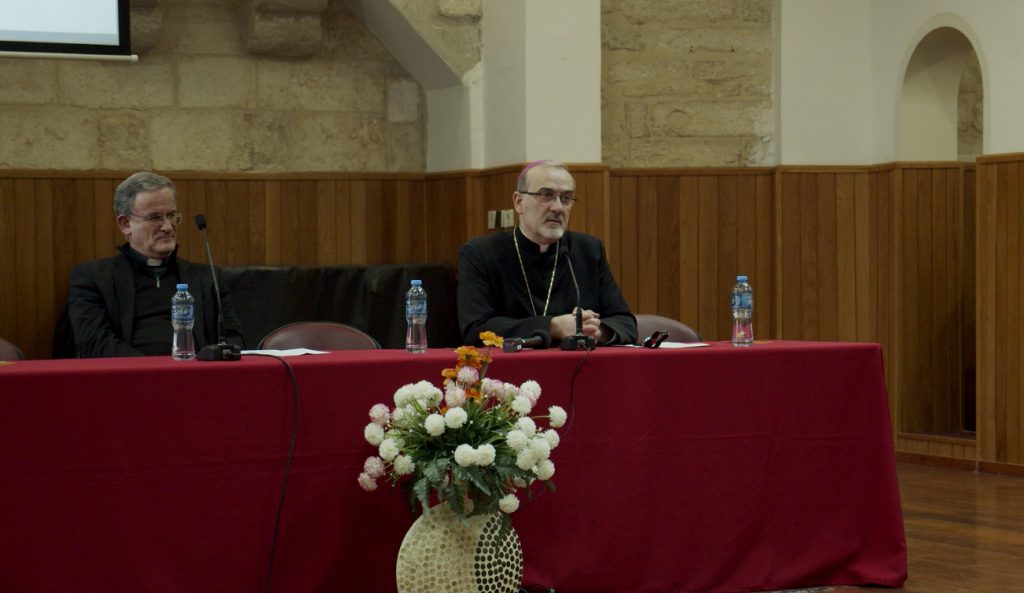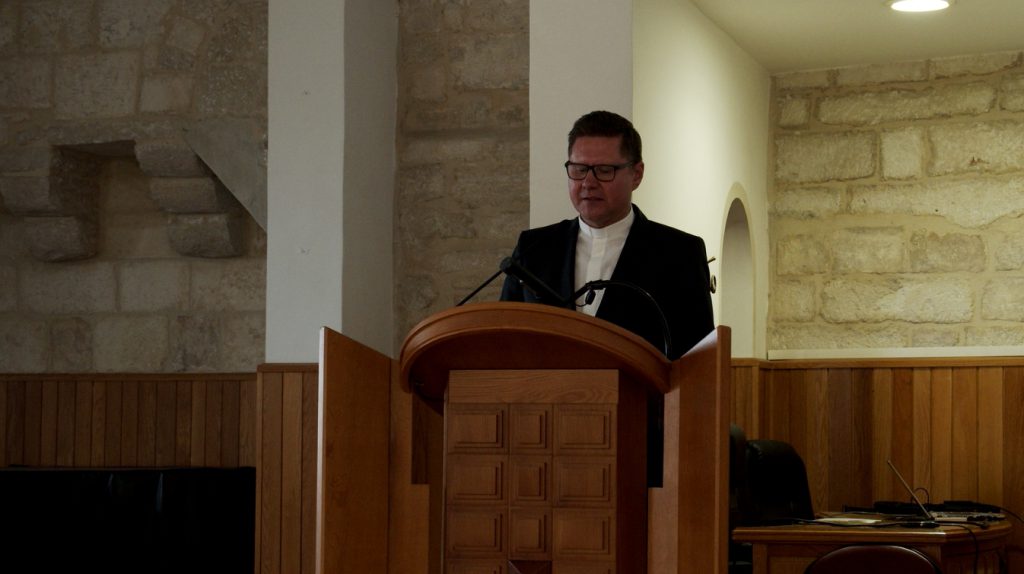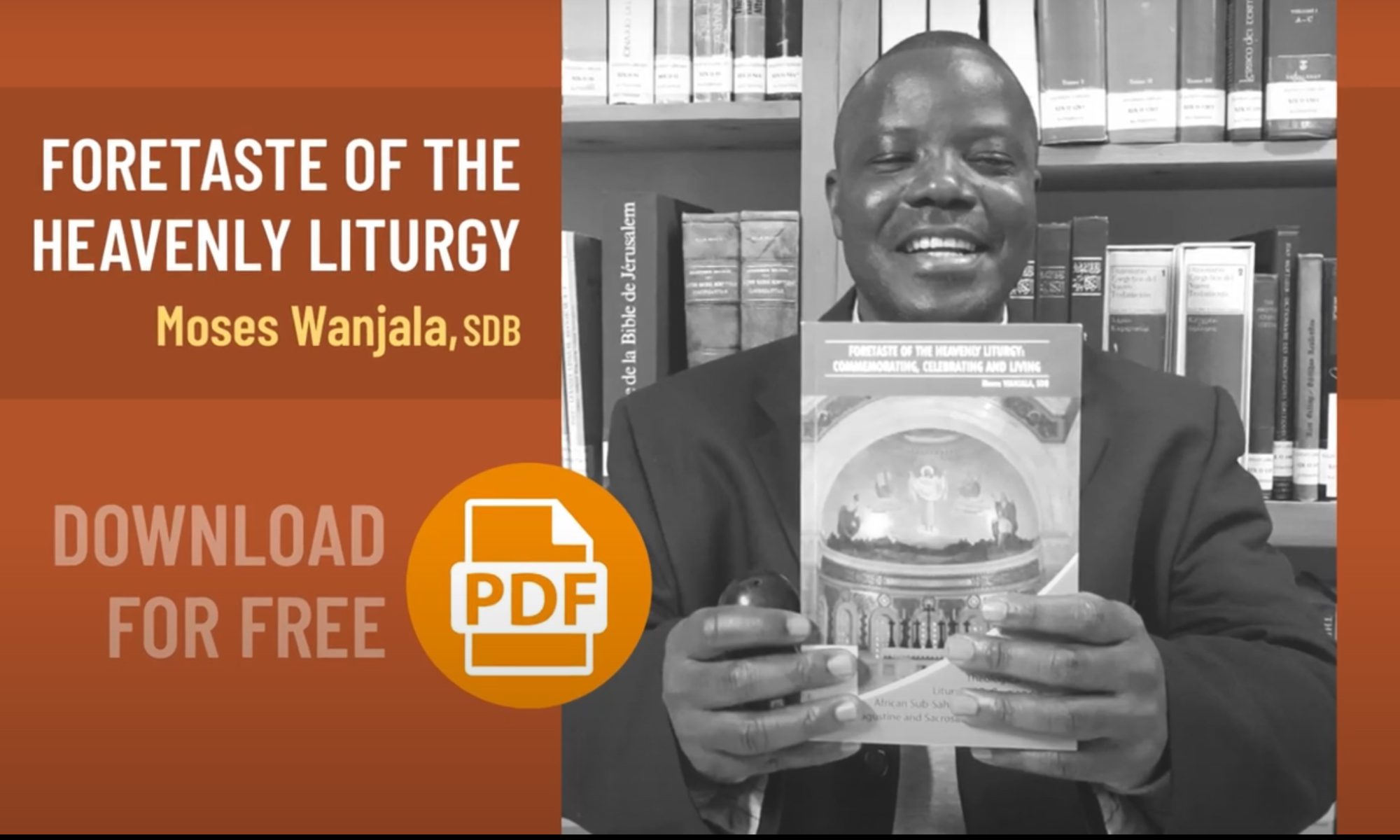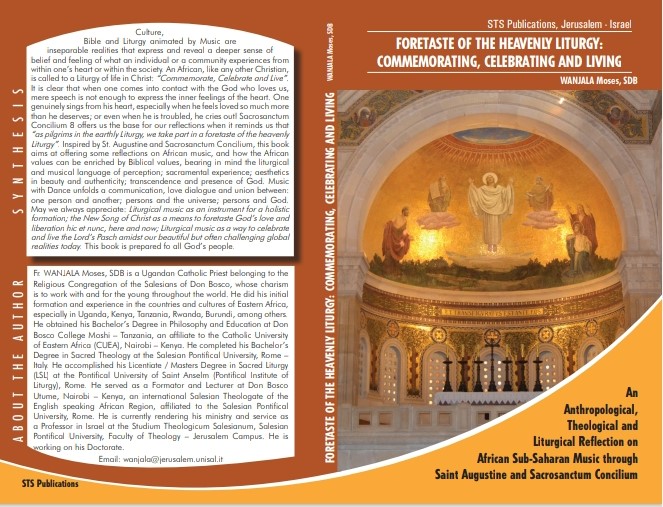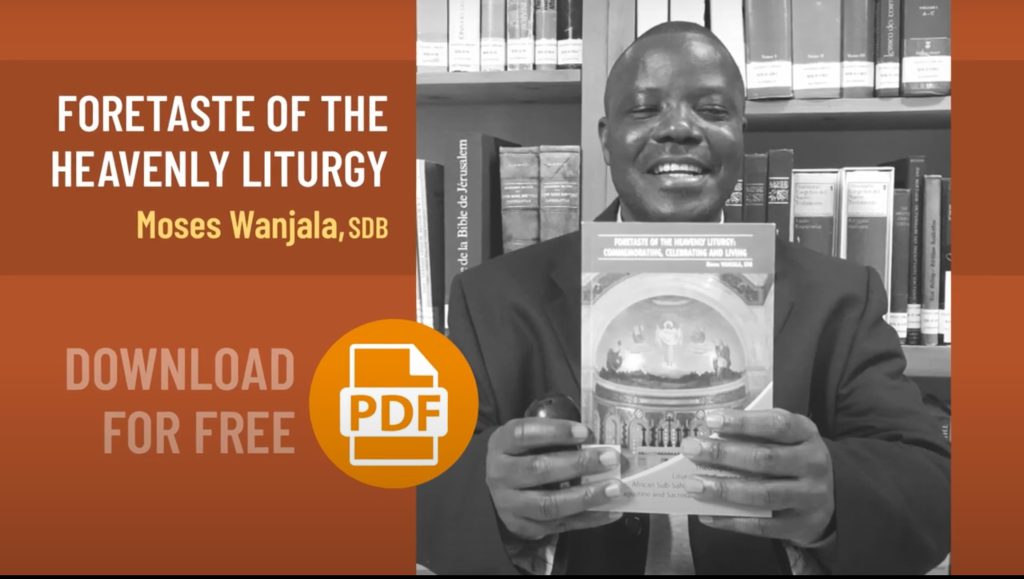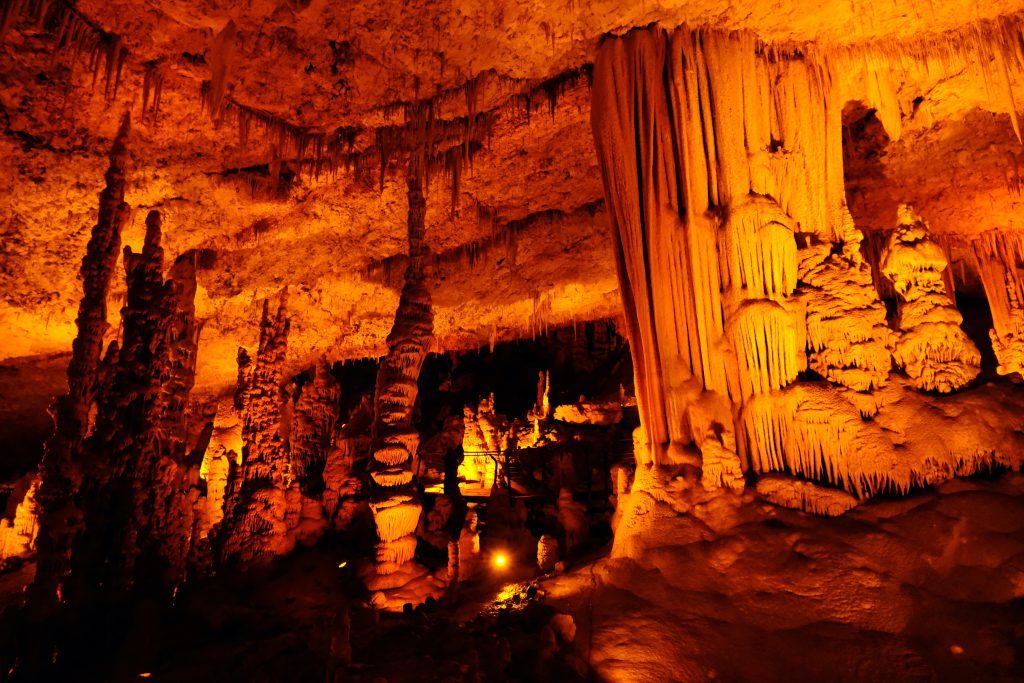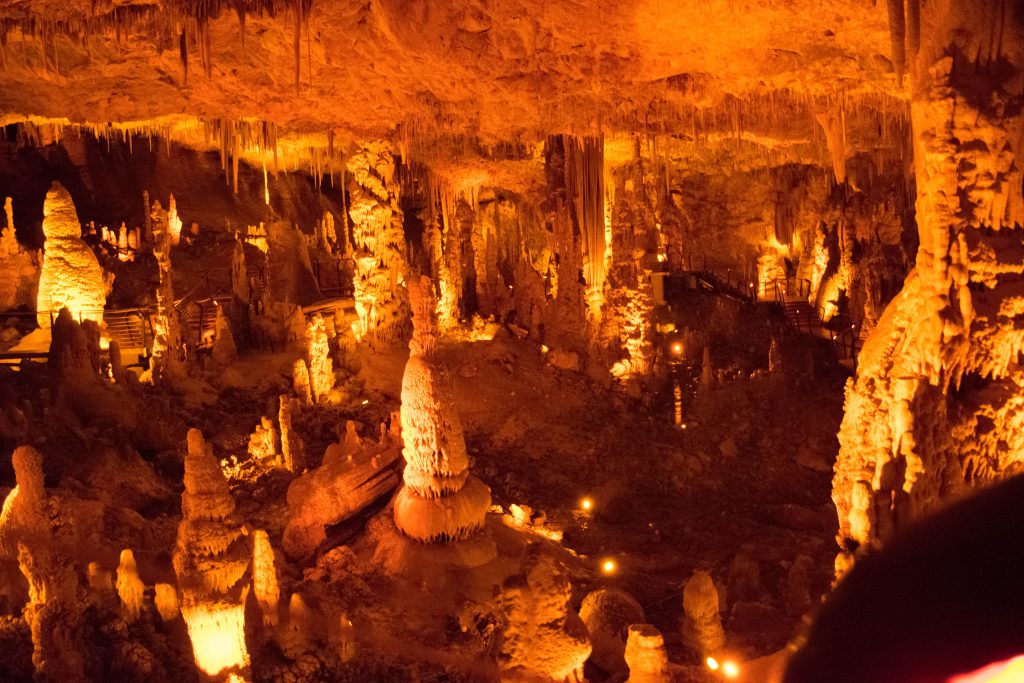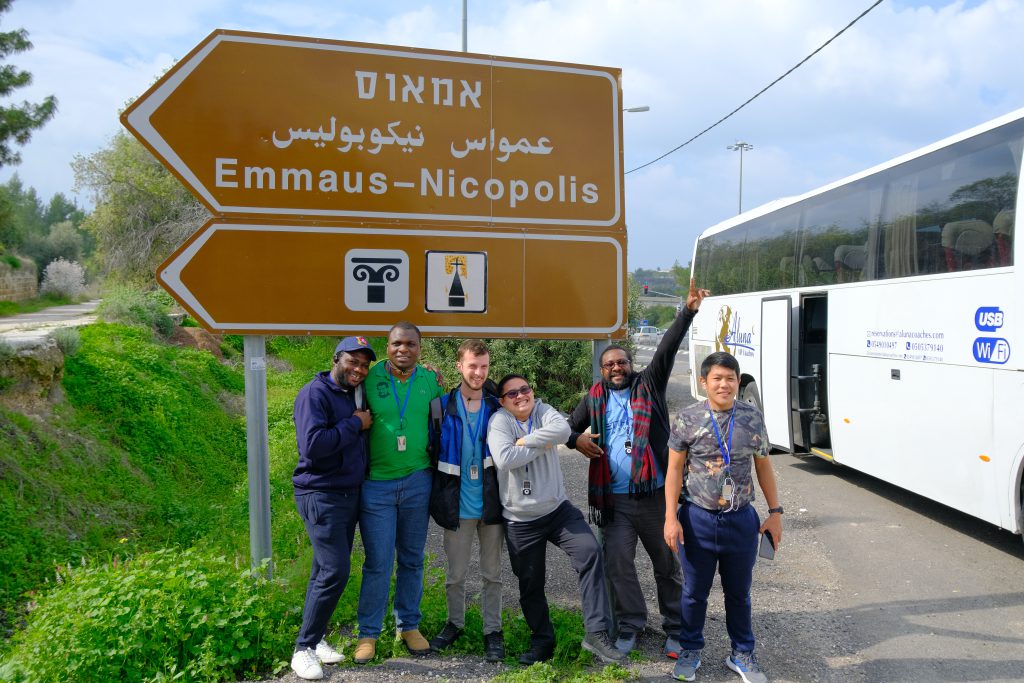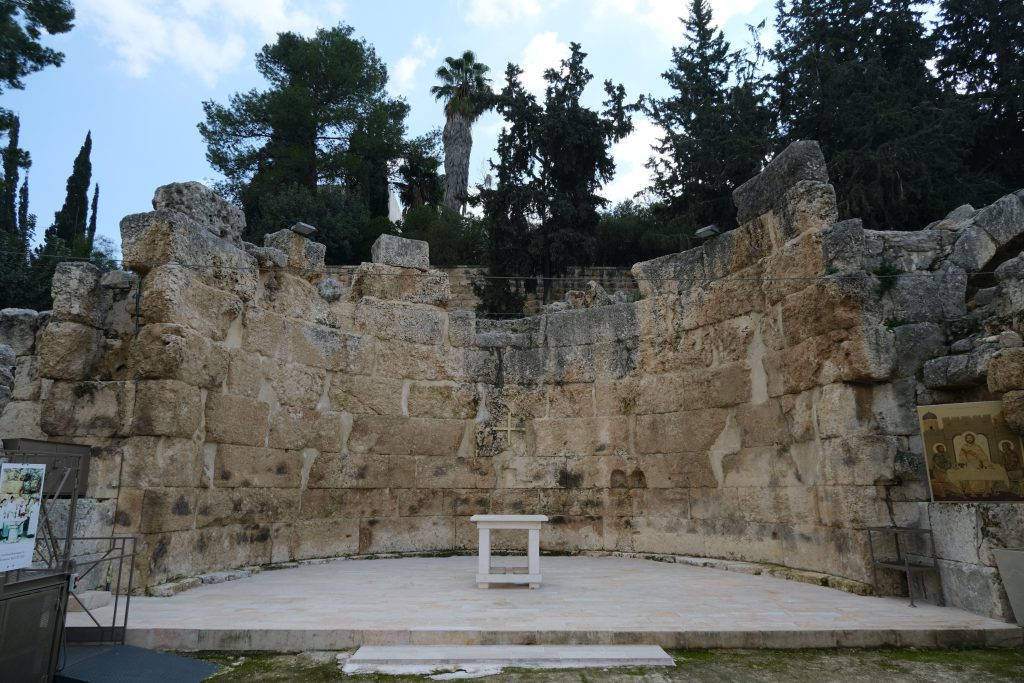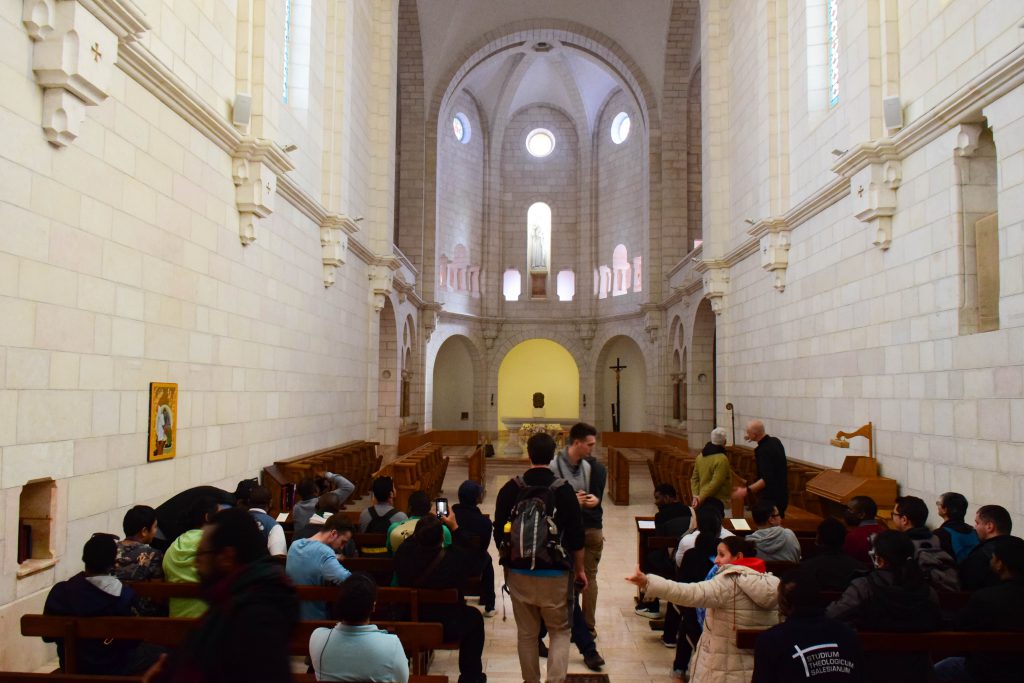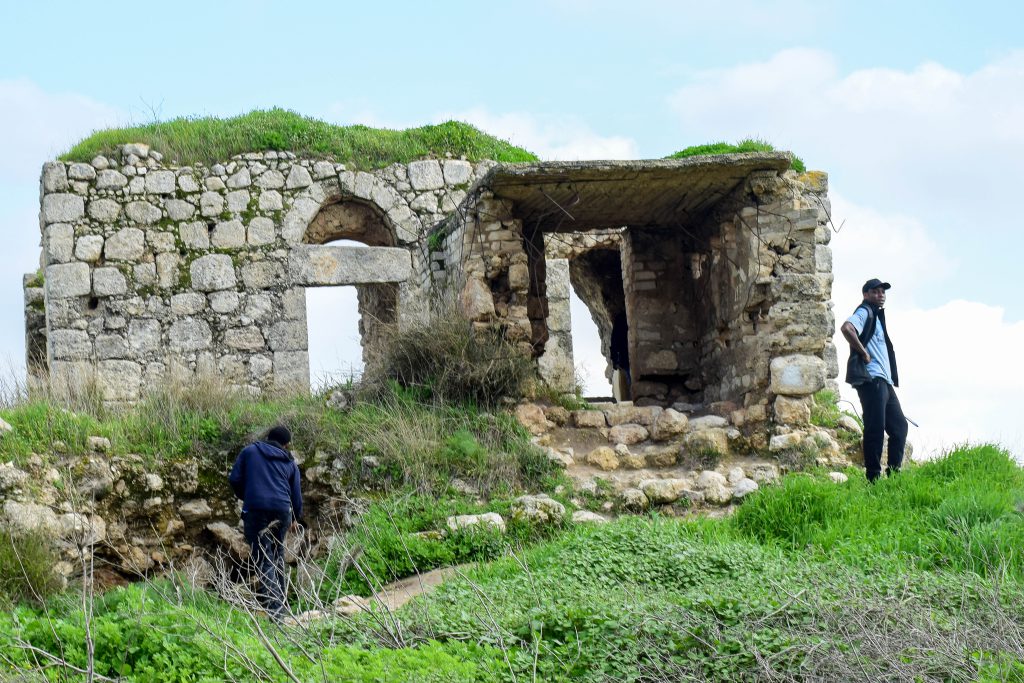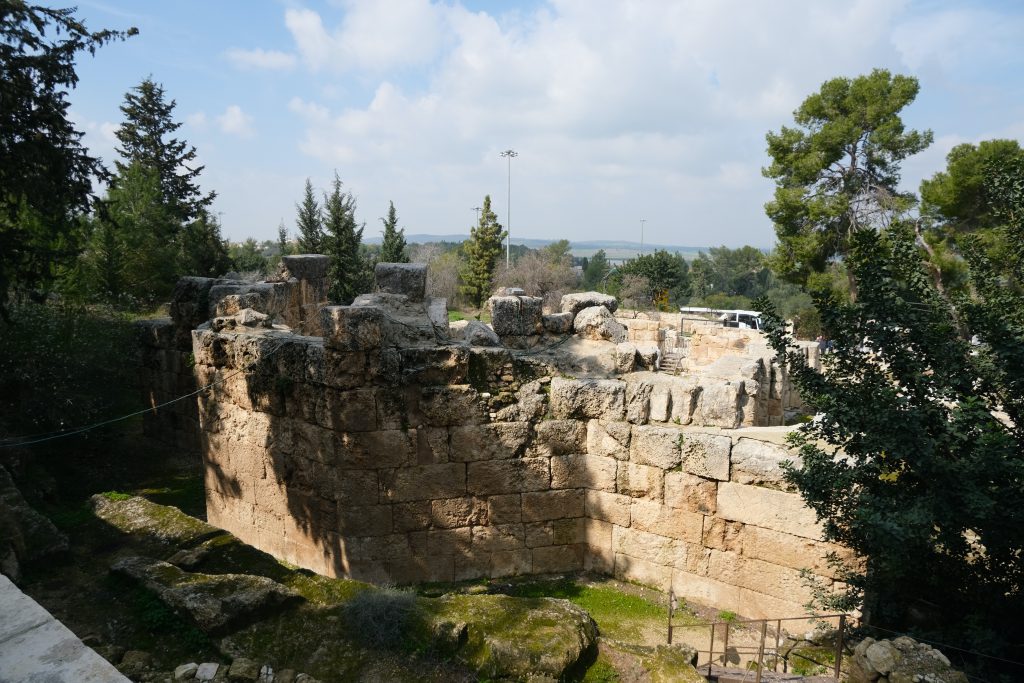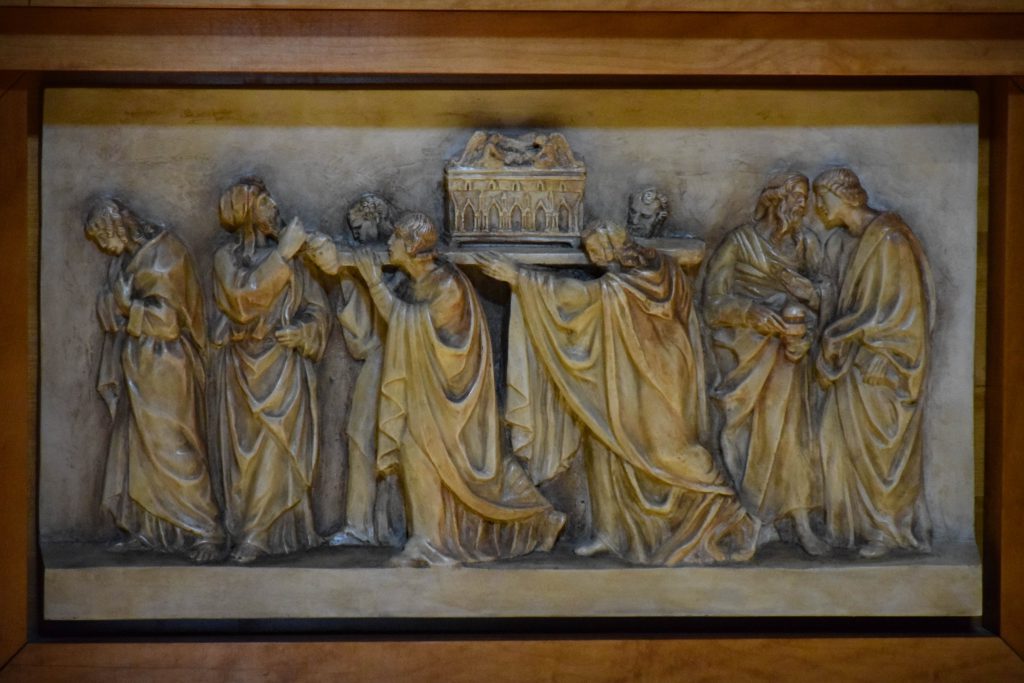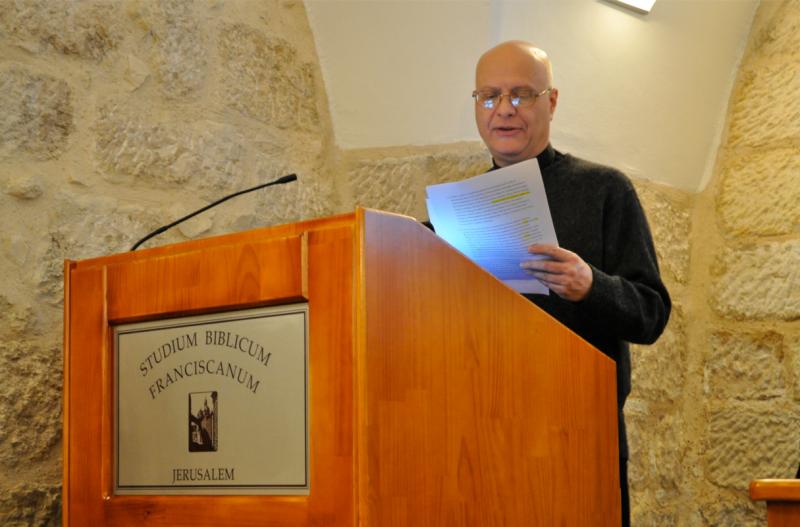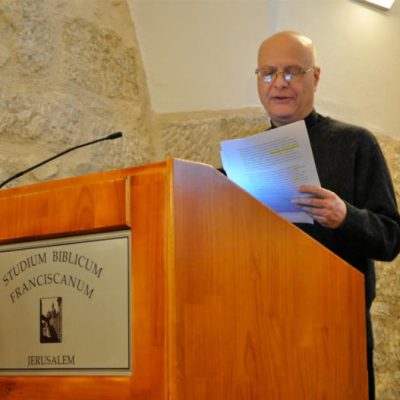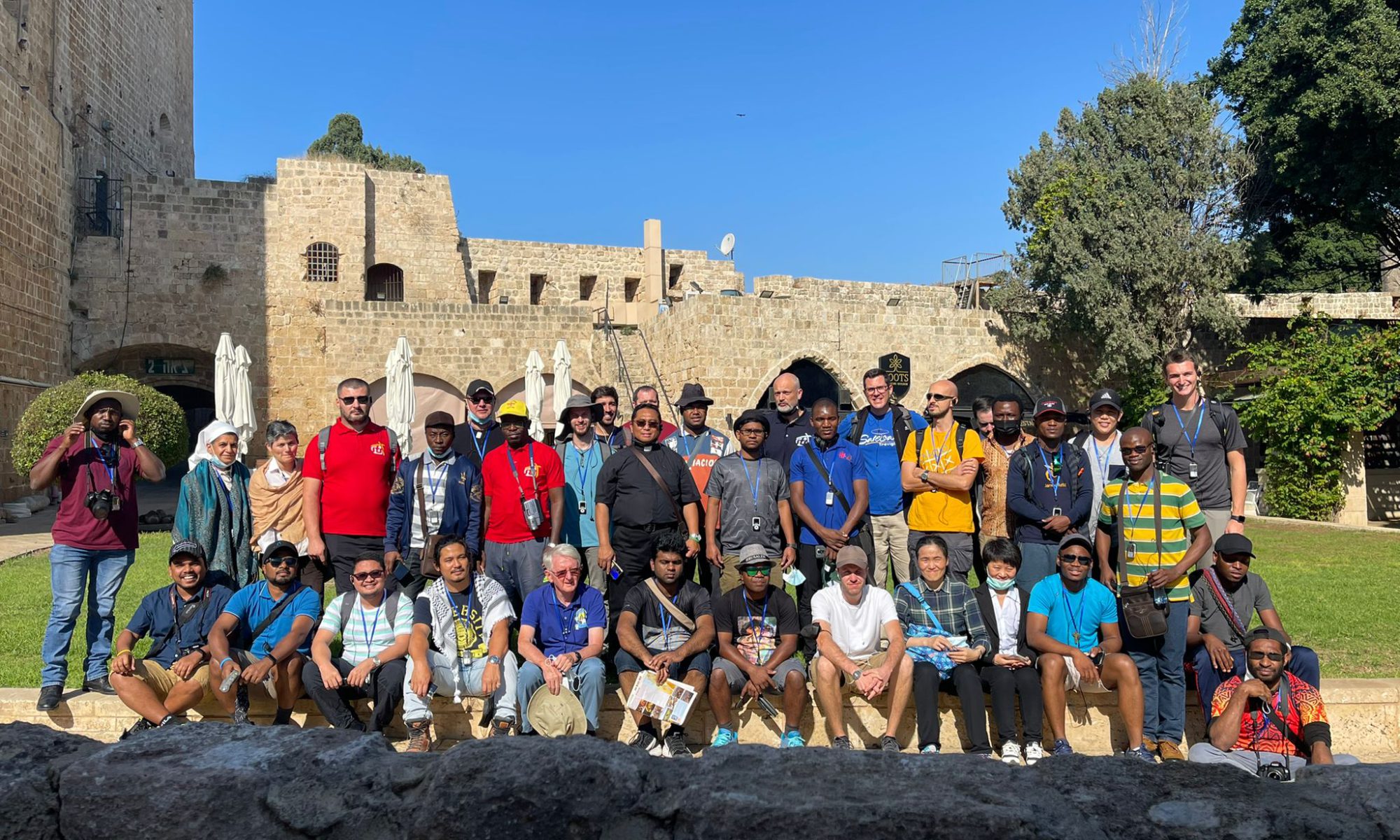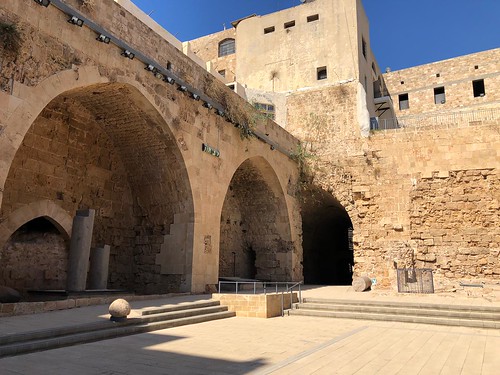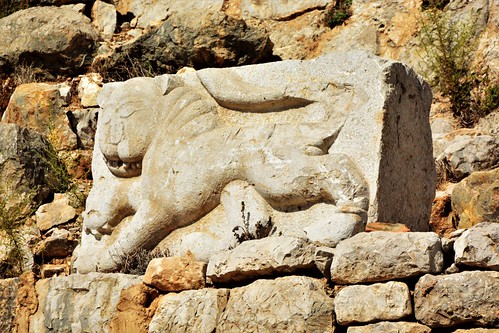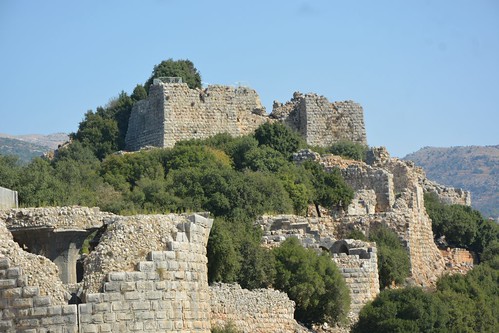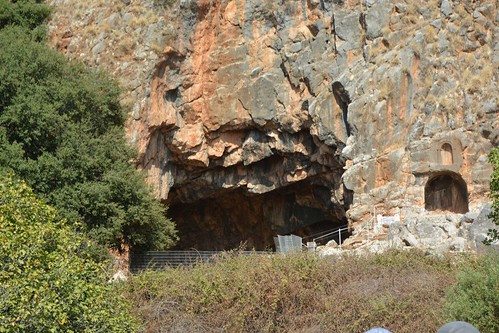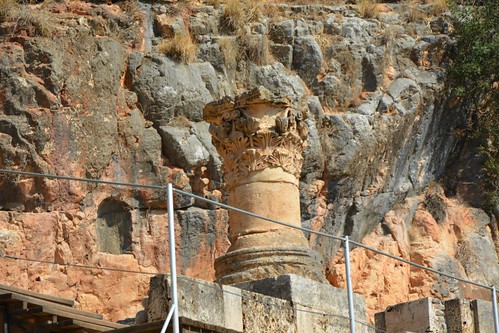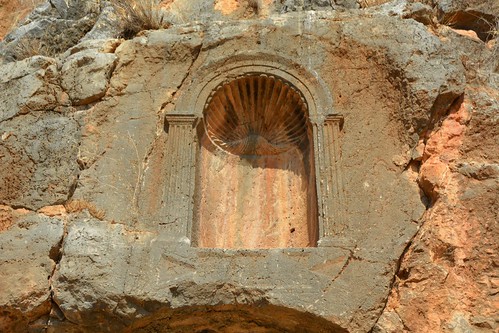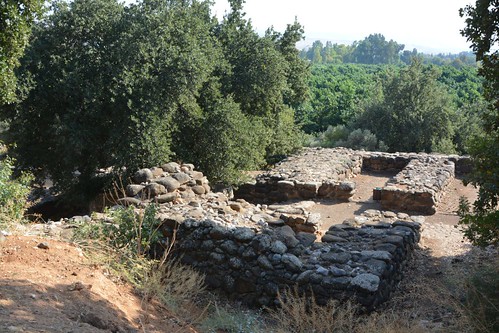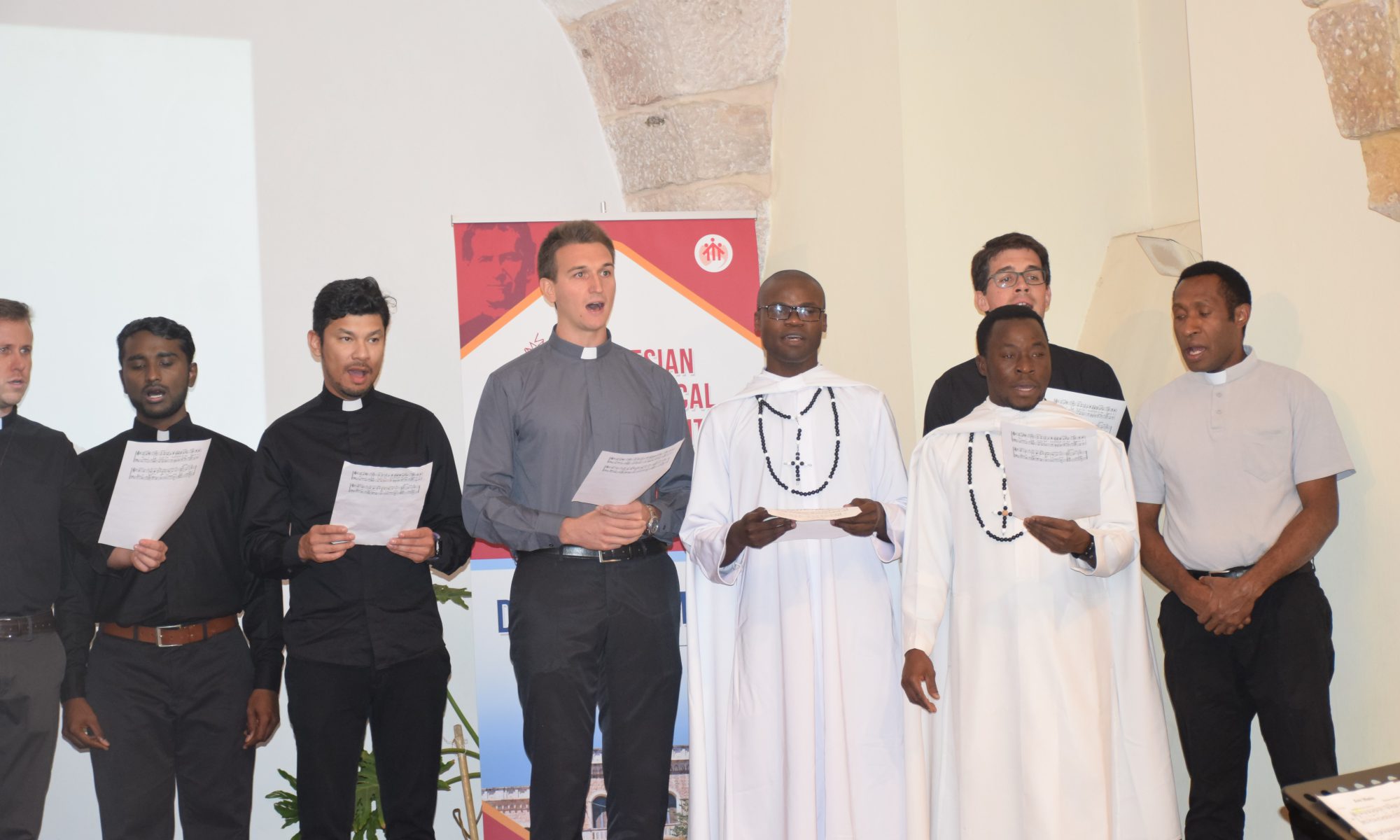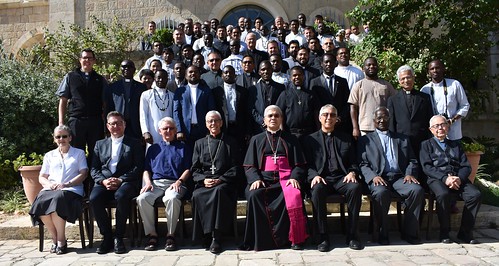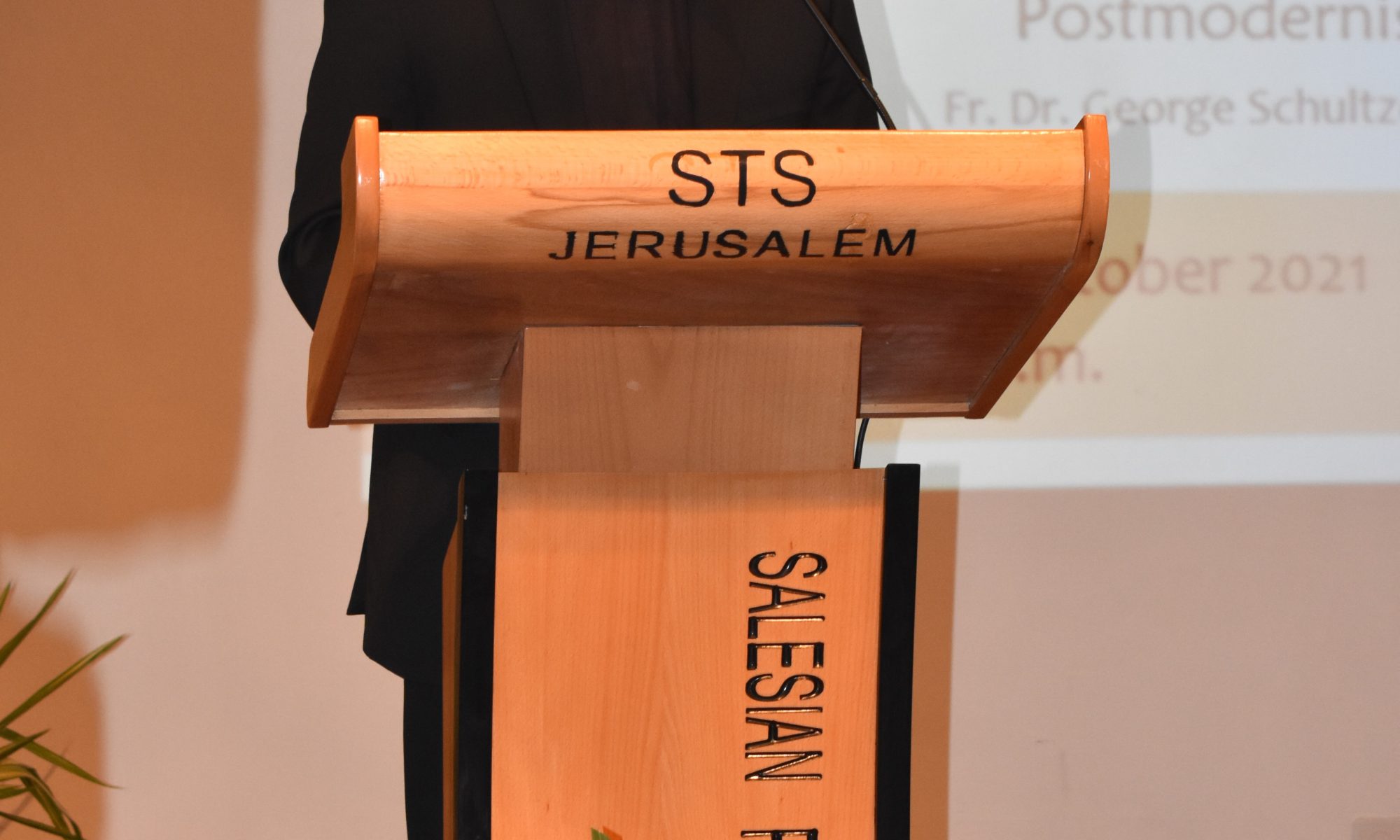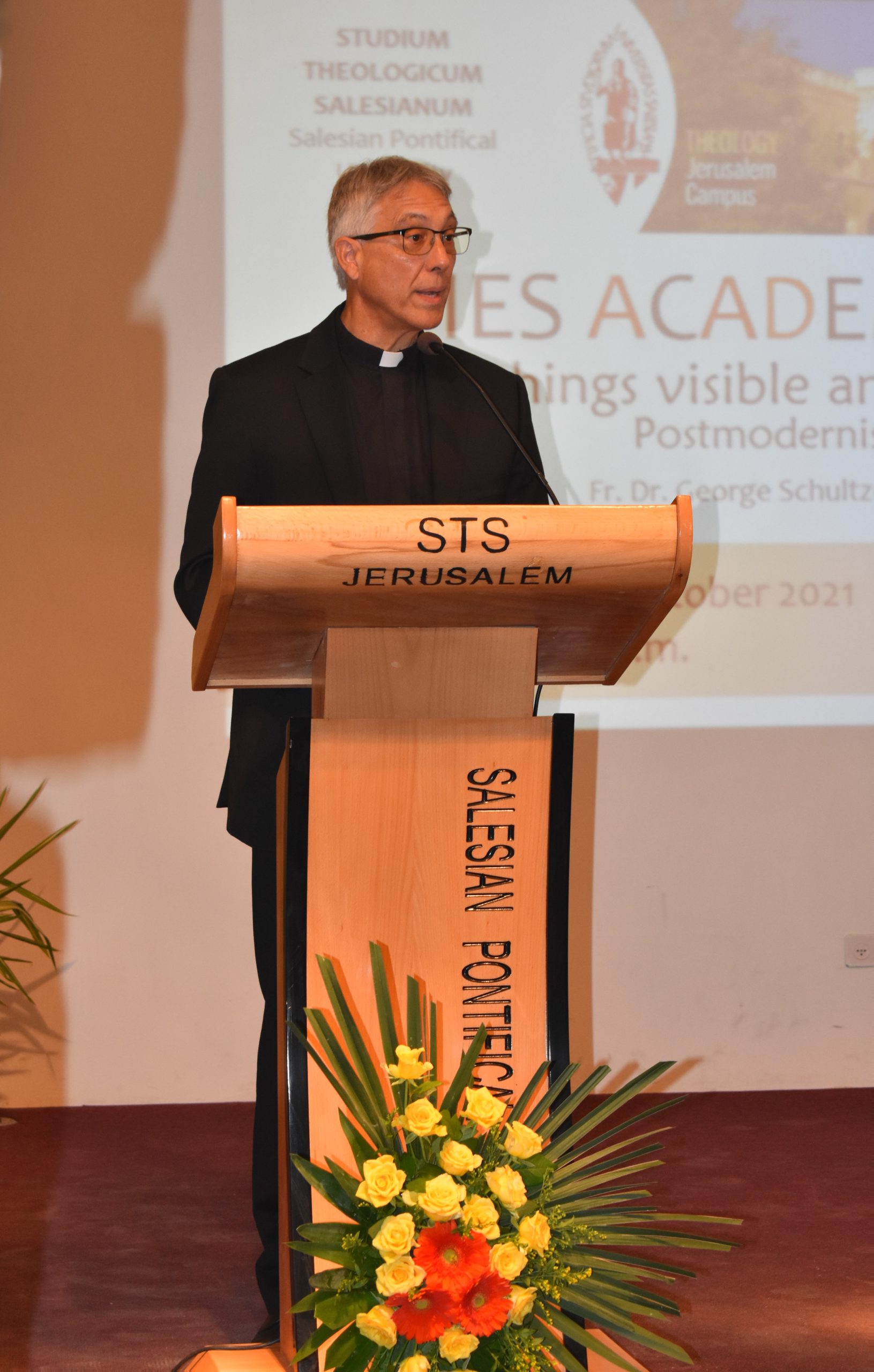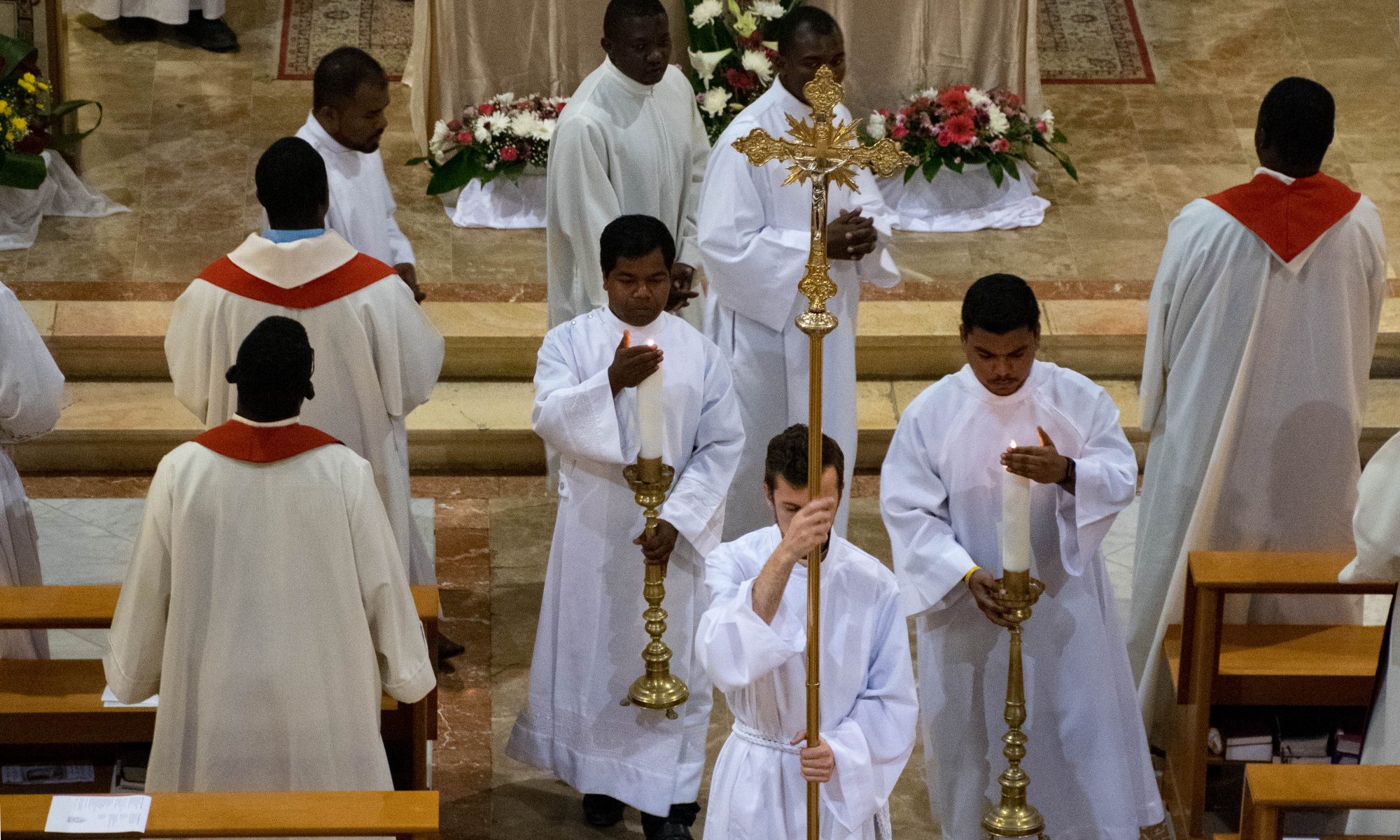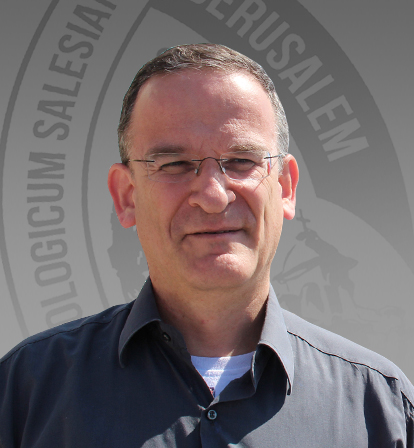Of All Things Visible and Invisible: Postmodernism and Unbelief
Not for Distribution without Author’s Approval
Allow me to begin this Deis Academicus talk by thanking you for the opportunity to share my thoughts about the love and truth found in our Catholic faith. I particularly want to thank Fathers Andrzej Toczyski SDB and Stanislaus Swamikannu SDB for their invitation. Traveling in Latin America and identifying myself as a religious priest (“un religioso”), strangers asked me if I was a Salesian. To my chagrin, I told them “No, I am a Jesuit, and St. Ignatius of Loyola is our founder.” I can attest to the many alumni and supporters of the Salesians throughout Latin America and the world. God bless the work of you and your companions.
Growing up in Silicon Valley in California, originally named Santa Clara Valley by Franciscan missionaries, my faith and intellectual life coalesced. I witnessed the Valley morph from fruit orchards to microchip manufacturing, and classroom technology evolved from slide-rulers to calculators to desktops to laptops. The Director of Research at Hewlett-Packard Laboratories told us in 1983 that handheld computers were the future. Today we have mobile phones, computers held in our palm.
Mountain View, California, my hometown, is the headquarters of Google. Facebook’s corporate offices are a 10-minute drive away. They are internet and media titans. While science and technology have altered the world dramatically, the truth of our faith remains. Today in Silicon Valley, you find Christian faith, hope, and love in the midst of the brokenness of poverty, the woundedness of divorce, the pain of addiction, and environmental distress. While our faith and reason can embrace the life-giving and life-affirming advances of science and technology, they also point to our sin and its consequences. Aren’t we always in need of conversion no matter our global address or era?
Decades ago, I came across a short news account about Cardinal Ratzinger speaking to a conference of scientists and engineers at the Vatican aula. Perhaps it was a meeting of the Pontifical Academy of Sciences. I don’t recall. What captured my attention were his questions to the audience. He first asked rhetorically, “What is the one thing that you require for your work?” He answered: Mathematics. He followed with another rhetorical question, “Where does mathematics come from?” He said: God. The Church sees no discrepancy between faith and reason. As you embark on your new school year, remember that your God of love is also the God of truth.
An interest in mathematics runs throughout Western philosophy and points to logic and reason inside and outside of time. The mathematicians clearly have perplexing problems they fail to understand, for example the nature of the irrational number Pi and the logical truth of arithmetic and set theory, but my concern is the use of exceptions, rarities, or outliers to question the “structure of structure.” The fact that professional mathematicians do not fully understand or see mathematics perfectly underscores our profession of faith. Only God fully understands God’s creation, both the visible and invisible. But by our faith and reason, we look for our meaning, making at times the invisible more intelligible.
You live in a world that often dismisses faith and disputes reason. Bluntly speaking, schools and the media promote truth as a phantasm and morality as personal. The world is full of expressive individualists who do not realize they are emotivists. They think, speak, and live by their emotions. Their truth is whatever their feelings deem it to be. Study popular entertainment, and you see the emotivism of today’s celebrities leading cultural opinion.
How do you seminarians respond to what lies before you? Your education and formation in philosophy, theology, and the spiritual life are a gift from God. Our tradition teaches that faith and reason are united. Our Profession of Faith, the Nicene Creed, says: “I believe in one God, the Father almighty, maker of heaven and earth, of all things visible and invisible.” Our faith acknowledges that we see and we do not see. Our ancestors, we, and every future generation participate in a pilgrimage of seeing and not seeing, knowing and not knowing. We live at a time when we can agree that we know much more of our nature and world than ever before but much remains to be seen. We are trying to see (or understand) all that is invisible to us, but will this ever happen in this earthly journey?
Human beings do not invent what is true, they discover it. Historically, many people of faith and reason recognize this fact, but prideful cultural influencers of every generation attempt to invent their own truth. Aaron mistakenly casted the Golden Calf in the desert and worshiped it. In the United States neo-paganism is common, and Harvard University recently appointed an atheist as its chaplain. Yet, whether it is idolatry or denial of God, the world is looking for love and truth but in all the wrong places and in too many faces.
With regard to truth, I am referring to what is outside of Plato’s allegorical cave, the ideas or forms, that is, the metaphysical that we want to know while recognizing our presence in the aula of the Salesian Seminary in Jerusalem. Recall that Plato said we would never see a perfect circle or a perfect straight line, but we know they exist. When St. Augustine writes of memory, he is following Neoplatonic ideas of truth. I can also ask, “Do I know the truth of Aristotle’s four causes: formal, material, efficient, and final, without the metaphysical, that is, the invisible?” At some point we have to refer to the metaphysical, the nonmaterial, the transcendent. Postmodern thinkers deny the metaphysical, but they also play word games to re-introduce ways of thinking and living that infer a metaphysical framing.
I am speaking in a commonsensical fashion because life, even in dire circumstances, suggests a structured world. Is it unreasonable to accept a meta-structure based on ideas and realities we do not fully understand—that is, the invisible? Is it unreasonable to recognize laws of logic and mathematical truths as independent of my mind? Kurt Gödel, the 20th century mathematician and philosopher, discovered we cannot prove true mathematical statements with logic because at least one proposition in the proof cannot be proven or disproven. He was baptized a Christian and remained a believer in God. In fact, Gödel discovered a proof of God’s existence that according to Fr. Robert Spitzer, a contemporary Jesuit philosopher, improved upon St. Anselm of Canterbury’s proof. Kurt Gödel spent his life searching out the logical truth of mathematics without discounting the metaphysical. He also used reason to accept mathematical truths while concluding logic could not prove them.
Can we agree that some truths are self-evident in our human experience? Here are two clear ones for me: 1+1=2 and “Do good and avoid evil.” Logicians may struggle to prove 1+1=2, but representationally, one apple plus one apple equals two apples. For our lives, the point Cardinal Ratzinger made with the scientists and engineers in the Vatican aula was correct. I will add that if the architects and builders of this aula had not followed the truth of mathematics and physics it would collapse. One plus one equals two, the interior angles of a triangle equal 180 degrees, the two legs of a right triangle squared equal the hypotenuse squared. And Non-Euclidean geometry also uses reason.
If this building does not have a solid foundation; it will not stand. The cornerstone guided ancient stonemasons in constructing walls, and the angles were key to a strong building. Isaiah 28:16 “Therefore, thus says the Lord God: See, I am laying a stone in Zion, a stone that has been tested, a precious cornerstone as a sure foundation; whoever puts faith in it will not waver.” Jesus says in Matthew’s Gospel: “The stone which the builders rejected has become the cornerstone.” In Catholic social teaching, the Church continually speaks about people of good will and the common good. Both Plato and Aristotle spoke of the “good”. Plato saw the good as knowing and doing what was true, and Aristotle understood the good in terms of fulfilling an end or function, the final cause, being a good person, a good knife and so on. If you know what a human being is, you should be able to describe a “good human being” to me.
Doing good and avoiding evil suggests we follow what is true, more forcefully and clearly put, not to live a life of lies. Who is the father of lies in the Gospel of John? The Devil. Jesus is the logos, the word made flesh, he only thinks, speaks, and acts in truth. Despite our awareness of the invisible, Christians believe creation came from reason and a plan, and Jesus embodies it. Jesus encouraged his disciples to preach to others that the Kingdom was upon them. Our faith and reason make the invisible intelligible, if not visible in the proverbial light of day, because Jesus is the Kingdom.
I offer another truth for today’s lecture. It is about our engagement of the postmodern moment. Postmodern thinkers, who are relativists, subjectivists, and non-believers, cannot deny this truth. It comes through the classical philosophers, and Aristotle is probably the most obvious spokesperson. We all have to see, judge, and act. Some of you may recognize this triplet from the Young Christian Workers Movement founded by Joseph Cardinal Cardijn of Belgium. As we move through life, we have to make decisions based on our best data and analysis, make a choice, and act. Believers and non-believers alike have to go through these same steps. We can disagree about observations, have unique analyses, and act differently, but we all take these steps. It is true for every mature human being.
Joseph Cardinal Cardijn’s advice to “See, Judge, and Act” continues to make sense. At a fundamental level, our natural desire is to live life well. To flourish, as Aristotle taught, requires our recognition of the essence of happiness (necessitating seeing and judging) and our personal decision or election to choose the path of true happiness (our acting). Philosophy is a resource for everyone, whether theists, agnostics, or atheists, because of the common human longing to understand who we are and how we are to be.
Cardinal Cardijn’s seminary teacher was Fr. Antonin Gilbert Sertillanges, O.P. (1863-1948), who used St. Thomas Aquinas’ discussion of prudence in the Treatise on the Virtues (Question LVII, Art. 6) to formulate see, judge, and act. Fr. Sertillanges also borrowed from the work of Ollé-Laprune (1839-1898), a respected lay Catholic philosopher, who used Aristotle’s writing on the virtue of prudence to formulate see, judge, and decide. The philosophical genealogy of Cardijn’s formula, beginning with Aristotle and passing through St. Thomas, is unmistakable. Discernment is seeing, judging, and acting. This is a true for all human beings. We Catholics discern our reality within the understanding of our faith and reason. St. Ignatius of Loyola discovered the Spiritual Exercises and taught others to use them to discern God’s will. He wrote in the “Rules for Thinking with the Church”:
We must put aside all judgment of our own, and keep the mind ever ready and prompt to obey in all things the true Spouse of Christ our Lord, our holy Mother, the hierarchical Church.
Other descriptions for postmodernism are poststructuralism, anti-foundationalism, and post-foundationalism, which all suggest a lack of stability, orderliness, and purpose. Everything is in a state of constant change reminiscent of the philosophical difference between Heraclitus and Parmenides. Heraclitus: “Into the same river it is not possible to step twice.” You cannot know in a complete way because the world is in a constant state of change. Parmenides believed our world and reality were foundational and stable, but our senses led to the illusion of change. And Parmenides correctly argued that knowledge was not possible unless there was something that did not change. Centuries later Plato used the Divided Line in the Republic to address the question of change (the visible) and permanence (invisible but intelligible).
Not to be labor the point, I am obviously arguing for something that is permanent, an essence, otherwise we never know when an entity remains the same. In effect, knowledge would be impossible because everything becomes an illusion. But we have to agree that a fire can destroy this building, and therefore we should not start a fire in the aula. This is a reasonable understanding of our reality and the essences of “building” and “fire” whether it is this aula or one in California. It is good seeing, judging, and acting.
Perhaps some of you are thinking, “What if this lecture hall is made of noncombustible materials and a fire cannot destroy it?” You are making a common postmodern argument by pointing out an exception to the rule. Today expressive individualism can lead a person with a unique understanding or desire to demand a new rule to fit him or her. The exception then becomes the rule. Perhaps an individual or group decides that oppressors have created an oppressive power structure by their rule. History is full of oppressive people and regimes, but this does not mean that every reasonable and faith conforming structure or rule is oppressive because of someone’s objection. In our contemporary moment we have a men and women who do not want others to use the pronouns “he” or “she” to describe them. They want others to call them “they.” While this is a tragic example of the power of postmodern thought on language, it does not change the essence of men and women. Although rejected by postmodern thinkers, human experience suggests boundaries, categories, and norms can also help us do good and avoid evil. God did not call the Ten Commandments the Ten Suggestions. God gave us the Ten Commandments because God loves us. Faith is informed by reason.
Without any detailed discussion, but to provide some continuity, Rene Descartes’ thinking led to a mind-body dualism that influenced John Locke’s view that humanity seeks pleasure and avoids pain. Our faith teaches us that we are raised body and soul, which does not make Locke’s view of nature unreasonable. Our body has a purpose, it is a temple, but suffering and sacrificing with the right discernment have meaning. Thoughtless pleasure seeking and hopelessness lead to the delusions of addiction and suicide. Catholics are to affirm life and recognize the goodness of their body, but the pursuit of temporal pleasure alone does not give us meaning. Catholic social teaching instructs us to respect the dignity of life and care for it. Our two most basic desires are self-preservation and procreation. For this reason, the common good requires us to protect the vital cell of society which is the family. This implies the protection and support of marriage between a man and a woman, adequate work, education, access to health care, political participation, and a care for the environment.
Descartes’ mind-body dualism led to a progressively greater focus on the body (the physical) because Jeremy Bentham, an avowed atheist, followed John Locke’ response to Descartes and promoted a utilitarian view of moral life based on the greatest good for the greatest number. We then had James Mill, his son John Stuart Mill, and Adam Smith who led us to a global capitalist view of our human condition. Karl Marx, an atheist and materialist, also used utilitarian thinking in his labor theory of value.
But the Church rejects utilitarianism, in part, because of the problem of proportionalism. The utilitarian has the challenge of choosing between the greatest good and the greatest number, and I refer you to the Papal Encyclicals Fides et Ratio and Veritas Splendor to understand better the mistakes of utilitarian thinking. Although to its credit utilitarianism promotes individual freedom, and no one can deny its contribution to the extraordinary technological development and economic prosperity of the last two centuries. But are we more loving and truth abiding people because of the utilitarianism manifested by our mobile phones? Today we unfortunately have a world with a few exponentially wealthy people, far too many poor, rampant consumerism, continued political conflict, and ecological crises.
Immanuel Kant recognized the problem with John Locke’s seeking-pleasure-and-avoiding-pain moral view of the world and Jeremy Bentham’s utilitarianism. In such a world, people lived by hypothetical imperatives. Such thinking mistakenly placed the emphasis on individual desires and will. Humanity had no moral imperatives, no duties to abide by, no boundaries. In effect, the importance of the Ten Commandments diminished in the wider culture. Catholics and Protestants lived in internecine conflict. Hypothetical imperatives could not deny intrinsic evils such as racism, abortion, euthanasia, and genocide. Freedom without responsibility leads to lying. Who is the father of lies?
Kant said the only thing that is good is a good will and it requires us to act from duty. His simplest categorical imperative was the universal maxim to never use another person as a means to an end. He did not rely on revelation for his arguments or the experiences of phenomena to justify faith. He basically directed us to live as if God and our reason held in both the visible and invisible. Our understanding was limited to time and space. Any discussion of the noumena (which was an awareness of Kant’s unknowable thing-in-itself) was always speculative. It was invisible.
Arthur Schopenhauer followed Kant’s thinking, but argued that Kant’s noumena was our will to live. Schopenhauer believed our will to live was found behind the veil hiding the invisible. It replaced Kant’s noumena. It was a dominating will, and some believe Schopenhauer’s idea of the will led to Sigmund Freud’s theory of the Id. According to Schopenhauer, our insatiable will to live was the cause of our suffering. Schopenhauer, another atheist, said there were three ways to live in a suffering world: 1) the aesthetic experience that happens when we contemplate superior beauty, art, and music; 2) renunciations, renouncing temporal human desires; and 3) showing sympathy and compassion towards others. Schopenhauer’s study of Eastern religion was very evident.
The 20th century, in this rapid overview of philosophical developments, was important for our understanding of contemporary society and applied postmodernism. It was the century of the “linguistic turn”. Over 2,000 years earlier, Plato wrote that Socrates’ believed the oral tradition was superior to written texts because memory (memorizing) made something a part of us. The 20th century linguistic turn was a further recognition of language’s influence on an understanding of the world. You cannot bracket out language from philosophical thinking. Remember Descartes’ conclusion “I think therefore I am.” Descartes played the ultimate skeptic, attempting to leave all preconceptions behind, but he could not, because his statement “I think therefore I am” indicates a clear participation in a particular time and place.” Whether it is rationalism, idealism, empiricism, or any other “ism” language is paramount because ideas require communication. Descartes’ mind was not wiped clean of language in his exercise of absolute skepticism or radical doubt. Like all philosophers, his culture and context influenced him.
Friedrich Nietzsche was a student of languages and in particular ancient languages. He discovered ancient texts had multiple authors, internal contradictions, and historical and cultural biases, especially the Bible. He also transformed Schopenhauer’s will to life understanding to a philosophically understood will to power. What existed behind the veil hiding the unknown was humanity’s will to power. Nietzsche concluded in his study of literature, philosophy, and the arts that the will to power resulted in slaves and masters, influencing the postmodern deconstructionism of Michel Foucault, Jacque Derrida and others. Nietzsche interpreted Kant and Enlightenment philosophy as a will to power by enslaving others with reason and science. Just as the utilitarian reduction of our humanity to self-interest was mistaken, Nietzsche’s reduction of our humanity to the will to power was a mistake. Can we judge human behavior with one mega-trait, whether “self-interest” or “will to power”? With, seeing, judging, and acting, our Christian view of the human person offers a more reasonable, fraternal foundation. Love and truth offer us a solid cornerstone.
Will to power for Nietzsche is a constant striving for growth and development but it can also become crude power seeking. He rejected metanarratives especially Christianity that he said enslaved people, making them weak through humility, piety, and charity. He spoke his subjective truth while simultaneously rejecting the existence of truth and, in particular, Platonic forms, Aristotelian logic, and the Enlightenment truths of rationality and science, including Kant’s categorical imperative. Nietzsche also considered pre-Socratic, ancient Greek culture the epitome of “good living”. But he clearly made a subjective judgment about “the good” while contending other cultures, including Christianity, were inferior to his preferred culture. He promoted his own, dare I say, essential good, the will to power. His influence on postmodernism was undeniable.
I mentioned Michel Foucault. Jacque Derrida also contributed to a dramatic shifting of philosophical and cultural beliefs with a promotion of cultural relativism and individual subjectivism. The writings of linguist Ferdinand de Saussure and anthropologist Claude Lévi-Strauss shaped Foucault and Derrida.
Lévi-Strauss used Ferdinand de Saussure’s language studies for his anthropological understanding of primitive societies. Where De Saussure described language as signs (the signifier, the signified, and the referent) Lévi-Strauss saw the replication of these signs in the relationships forming the structures of societies. For example, the myths of a society and their impact on culture originate with language, and in the case of a text, the text is the source of meaning (e.g., the Bible for us). Ludwig Wittgenstein’s analytic linguistic philosophy also had a major influence in the linguistic turn of the 20th century. I am referring to the late-Wittgenstein and the Philosophical Investigations. In a nut shell, culture and context determine the meaning of words for Wittgenstein. In the 20th century philosophy was about language.
Derrida read Edmund Husserl and Martin Heidegger; Husserl was Heidegger’s teacher. Husserl, a mathematician by training, accepted an inability to prove the truth and logic of mathematics and science. As the father of phenomenology, he turned from trying to find truth in the realm of ideas and looked to our human experience, our consciousness of the phenomena in the lived world. His transcendental phenomenology in effect provided a Platonic, idealistic realm outside the phenomena of Husserl’s cave that provided “true” ideas or forms (never absolutely provable), giving permanence and meaning to his lived life. Husserl bracketed or suspended the thought of having proof for truths in a realm outside of the phenomenal. Yet by his bracketing, he affirms something of the sort. In other words, one can live with a thought of the metaphysical even if the metaphysical does not exist.
Heidegger, like Husserl, questioned the truth and meaningfulness of metaphysics. He went deep into Western philosophical history, however. He investigated the historicity of philosophical ideas. Heidegger used phenomenology as a method to investigate the presocratic Western philosophers and identified the Being of being in the phenomena. Heidegger also used the term “destruction” when he rejected the metaphysics initiated by Plato’s writings. He also thought in terms of intentionality which recognized the subject’s influence on the object of his intention. Basically, when philosophers “discovered” something about an object, they imprinted their culture and beliefs on the object. In part, in Heidegger’s view, science, reason, and the Western philosophical tradition were prejudiced and subjective from the beginning because all of language is metaphor. Heidegger’s method of destruction is the basis of Derrida’s “deconstruction”.
Derrida used Heidegger’s conclusions with his reading of language to point out prejudices and exclusions in texts. He also depended on the thought of Emmanuel Levinas, another student of Husserl, who reflected on the “Other”, by implication people often treated as objects not subjects. We would live an illusion if we were to accept Derrida’s rejection of permanence or certainty. I use the word “permanence” to describe Derrida’s rejection of presence.
Derrida wanted no cornerstone in his philosophical thought, but in his humanity, he had to see, judge, and act like the rest of us. Apparently, Derrida was a decent man. But what was the source of his decency? If it was the intellectual life, he needed to deny its foundation as well. Derrida would defeat his work of deconstruction (which is a method) if he were to suggest a foundational source for “justice” or “human rights.” Unfortunately, when “truth”, “good”, “justice” or “right” become relative concepts than people can shrug their shoulders and do nothing in the face of evil.
Derrida’s well-known neologism—différance—means words and texts have no permanence. Every word has traces of other words. Meaning is always differed. We never really know the speech and text, making Derrida’s own prolific writing uncertain, lacking presence, always becoming something. Such is the understanding of the words “person”, “me”, “you”, “they”. Following Heidegger’s plunge into philosophical history, Derrida contended that words had meanings that were favored or disfavored in difference: “subject” over “object”, “mind” over “body”, “presence” over “absence”, “man” over “woman” and so on. In each dichotomy, one word carried more value, importance, and power according to the culture and context.
This domination played out in relationships, for example, in the man/woman dichotomy, by leaving women oppressed, marginalized, and excluded. For this reason, activists, academics and politicians argue for non-binary thinking and living. As one example, the non-binary view calls men and women absolutely equal, but the Church recognizes (sees) the complementarity in our sexes. Our faith and human reason recognize both the differences between men and women and the equal dignity of men and women. Even Derrida conceded that in binary relationships dominance is lost and gained, a reversal of the status quo can happen. He acknowledged the good and redeeming qualities of both “equality” and “inequality”. Why suppress mathematical genius, musical gifts or athletic prowess with demands for artificial equality or deny the truth, beauty, and goodness of the complementarity between a wife and husband?
While not denying oppression and injustice (caused by our sin), Derrida’s understanding of language leads to a pluralistic and fluid way of thinking. It begs the question of our becoming tolerant of the intolerant and accepting every human behavior as protected. Without permanence or presence, every exception can demand acceptance. Should demands for inclusion include abhorrent behavior as protected? Can we speak of injustice when “justice” is a word without meaning? Both Foucault and Derrida are rejecting limits and championing change, following Heraclitus’ denial of permanence.
Foucault and Derrida contended that power and the vagaries of language resulted in exclusion and oppression. Because people commonly want freedom without responsibility, their influence in higher education is extraordinary. They sowed seeds of unbelief and pride. This lecture started with ancient Greeks debating change and permanence and ends with Foucault and Derrida arguing for change without permanence. They would not surrender to the invisible. Socrates said, “I know that I do not know.” A humble believer surrenders to the all-knowing God. I see and I do not see. With faith and reason, I accept the visible and the invisible.
Foucault needed a cornerstone, something permanent to make his preferred changes meaningful. But he ultimately had no cornerstone. Nietzsche tried to solve this problem with his idea of the eternal recurrence; it provided the anchor of permanence, his metaphysics. The eternal recurrence made change permanent; it acted as his cornerstone. In fact, he borrowed the idea of eternal recurrence from Heraclitus. Those who recall Nietzsche’s life know he had his eternal recurrence inspiration at the site of a prominent boulder in the Swiss Alps. Doesn’t a boulder suggest permanence? While Foucault focused on the marginalized of society, and remember Jesus loved the marginalized or anawim, Foucault saw no distinction in types of marginalization because categories imply boundaries, limits, and permanence. He denied metaphysics.
Foucault used Nietzsche’s will to power in the books Madness and Civilization: A History of Insanity in the Age of Reason and History of Sexuality. He made genealogical and archaeological studies of text to understand the historical responses to both madness (insanity) and human sexuality. He followed the “linguistic turn” of the 20th Century. The naming and social practices regarding madness and human sexuality were historically and materially determined, according to Foucault. He offered his critical analysis but obviously gave no metaphysical explanations for madness or human sexuality.
Foucault embraced only the visible and offered no discussion of the transcendent—the invisible. His was a critical review of the treatment of the mad in history and the sexual lives of ancient Greeks. He identified social constructs. His descriptive words were “exclusion”, “refusal”, “blockage”, “concealment”, and “mask”. He framed as oppressive a traditional depiction of united families, the parental formation and education of children, and the support of extended family and friends. In his historical study of Ancient Greek sex practices, he stated men-boy sexual relationships were “not contrary of nature.” Foucault’s use of the word “nature” also pointed to his quasi-formal understanding of “nature”; it was never fully defined in his books.
Postmodern thinkers include “quasi-transcendentals” in their writing. It is hypocrisy for postmodernists to give quasi-transcendental meaning to words like “nature” when they deny essences, forms, or the metaphysical. They are surreptitiously reintroducing metaphysics by calling such concepts “quasi-transcendental”. They are contradicting themselves and playing word games.
What does all this mean? The lack of permanence in postmodernism means knowledge does not exist because of constant change: no permanence and no foundation. Postmodernists also look at categories, boundaries, limits, and norms as oppressive displays of the will to power, clearly not affirmations of life but pure power seeking. Derrida much more than Foucault recognized the oppressed can become the oppressor. My point is that categories, boundaries, limits, and norms do have good and useful qualities.
Recall. Jesus who made the invisible visible, healed the blind, the deaf, the lame, and the possessed. He did not say, “My Father made you this way, you need no healing.” He healed them. He had a normative, bounded, categorical understanding of good health. Isn’t this true for us? Postmodernism has promoted genderism among other errors and Pope Francis calls it “ideological colonialization”. The Congregation for Catholic Education published “Male and Female He Created Them” as a response to the errors of gender theory. I have tried to raise up some of the philosophical sources of these errors.
I began with Pope Benedict XVI’s focus on mathematics. This aula is standing because of truth. I have three slides to share. One shows Jesus handing his adopted father Joseph a carpenter’s square. Called a “norma” in Latin. It is the source of the words “normal”, “abnormal”, “normative” and of course “norm”. The Babylonians knew Pythagorean triplets 2,000 years before the birth of Our Lord. A constructor, or tekton, knew the importance of the right angle. The norma was an early handheld computer. The second slide is the bell-shaped, normal distribution curve which illustrates how a population will distribute about its mean. By faith and reason, I recognize both our equal dignity and inequality. But I recognize the tails of the curve are outliers. They are exceptions (whether desirable or undesirable), not the norm. The ancient Greeks studied the proportions and symmetry of our bodies. Our bodies have a purpose and function. The Apostles Creed tells us we are raised body and soul. Jesus healed people. He and the people he healed knew the norm. Postmodernists say no norms exist because they reject permanence or presence. There is only change.
Finally, the last image is a copy of Andre Rublev’s Holy Trinity icon. I leave us with this icon because it recognizes our constant need for discernment with the Father, Son, and Holy Spirit. We are sitting before love and truth itself, and our discipleship requires us to see, judge, and act well. Our faith teaches us to believe in the visible and the invisible. We place ourselves before the Holy Trinity and, with reason and faith, discern God’s love and truth.
God bless you—administrators, faculty, staff, and students—as you embark on this academic year. We should all be thankful that despite these challenging times, you are beginning the school year.
Salesian Seminary, Ratisbonne Monastery, Jerusalem
- Fr. Dr. George Schultz SJ.
October 16, 2021
